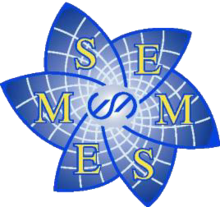Calculus Reordered
For reasons of sequentiality, an elementary calculus course is usually organising the topics that are discussed in the order where first limit is defined, which is needed to define continuity, then the derivative as the limit of a ratio, and only then the integral as the limit of a Riemann sum. The same order can be repeated for functions of a discrete variable (sequences) where the variable is usually denoted as an index. The limit can only be considered when the index goes to infinity (the only accumulation point), continuity and derivative don't make much sense (unless one wants to discuss finite differences) and (improper) integrals correspond to (infinite) sums, and the convergence of series. At the beginning some functions are assumed known: algebraic functions are a minimum. Sometimes also goniometric functions, and possibly the exponential and logarithm, but in principle all of these and the more "advanced" ones can be defined later. Functions are "defined" when no name exists for a converging series or a primitive function of an integral. The logarithm for example is the integral of 1/x, and the exponential function is its inverse. At least this is how I organized my lecture notes, but this is not always the order used, and it is also not in this order that all these concepts were developed historically.
What Bressoud does in this book is looking at the contents of a calculus course from an historical perspective. In what order were all these concepts developed, and where do all the well known theorems come from? In fact analysis came relatively late. The Greek were mainly doing geometry using rational numbers, and yet they computed the volume of a sphere and the area of a circle. Then the algebra came to Western Europe through the Arabs, and only then analysis took off with Newton and Leibniz who were already manipulating series or at least truncated series as interpolating approximations. It is only when analytic geometry bridged the gap between algebra and geometry, that analysis took over as the dominant tool for solving the practical analytic problems. The limit and its geometric interpretation came only very late.
The first chapter of this book covers the period up to and including Newton and Leibniz. The second is about the further evolution of calculus, analytic geometry, the logarithm, differential equations, waves and field theory, culminating in the Maxwell equations. The emergence of Taylor and Fourier series are covered in chapter three, but only in chapter four, we find convergence criteria for series. This convergence, just like the proper definition of a derivative, and other concepts that are defined as the result of a limit, can only come to a conclusion by including the limiting value by upper and lower bounds approaching each other. Only using these bounding inequalities, will eventually lead to the proper concept of a limit. This new concept allowed a previously unseen expansion of analysis, requiring to rethink the concept of a function, since it was realized how exotic some functions can be, like everywhere continuous and nowhere differentiable. Bressoud's historical survey illustrates that the order of our calculus course is inverting history. First came accumulation (integral), then ratios of change (derivative), then sequences of partial sums (series) and only in the end the algebra of inequalities (limit).
In an appendix, Bressoud adds his thoughts about how calculus should be taught. It is often the case that because of time restrictions that the integral is introduced as an anti-derivative, leading to cookbook recipes to compute integrals. Given the current technology, this is indeed a waste of time when there is no insight of the integral as a summation brought to a limit. Similarly teaching formulas to compute derivatives without seeing the derivative as a limiting process of ratios of change doesn't make much sense either, and series should be introduced as the limit of the sequence of its partial sums. And finally the limit is the result of a sandwich principle where upper and lower bounds approach each other. All of these insights are essential when looking at numerical analysis where exactly these insights are the elements that compute integrals, derivatives, and evaluate transcendental functions.
As I have been teaching elementary courses in algebra, analysis, and numerical analysis, I can fully appreciate Bressoud's conclusions that I described in the previous paragraph and I fully realize the importance of algebra as an essential element in the development of calculus, certainly when one moves to functions of several variables, (linear) algebra, matrices and vector spaces become essential. However, it is somewhat unclear if Bressoud is promoting to keep also the historical order as he describes it in this book: integration, differentiation, series, limit. In my opinion the limit is the missing link that lets the whole building of calculus fall into a logical sequence and hence it should come first. It would be a waste of time to re-live the trial and errors of history in a calculus course. Apart from the pedagogical conclusions, the book gives a nice survey of how the main achievements and theorems that any student meets in a calculus course came about. Moreover, it is shown that the historical approach is sometimes quite different from what is written in the lecture notes, because the mathematical tools and the objectives of the person developing them were in those days quite different from what is available to a student in the 21st century.
